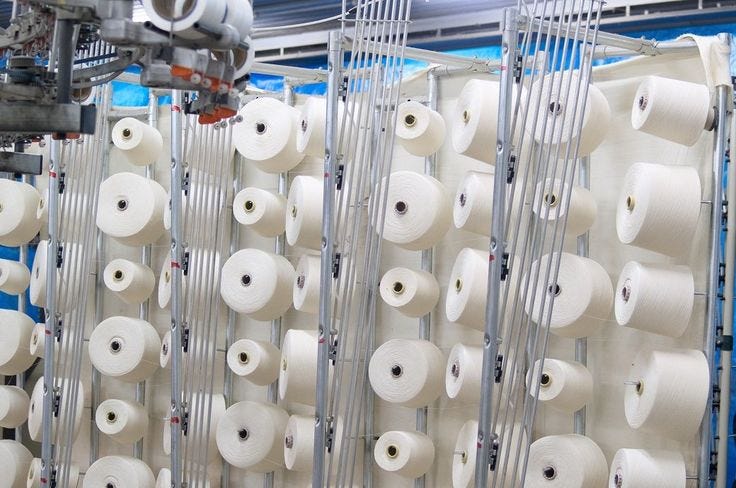China's Shifting Yarn Landscape: Challenges and emerging opportunities.
China hosted the Shanghai Yarn Expo from March 6 to 8. The three day event attracted textile players from across the world. The event once again established China’s importance as a top player in the global yarn market. However, China’s yarn sector has faced several challenges in the post-Covid era. And several trends have emerged clearly.
Key trends in China’s yarn market
Rising imported yarn prices: Imported yarn prices, particularly cotton yarn, have increased significantly due to rising raw cotton prices globally. This trend is expected to continue in the short term. This trend outpaced domestic yarn price hikes in China.
Profits squeeze for overseas yarn mills: High cotton prices are impacting the profitability of overseas yarn mills particularly those in Vietnam and Pakistan, forcing them to seek alternative markets or transition to blended yarns. Some mills are shifting to blended yarn production or exploring export markets beyond China.
Resistance to high-priced imported yarn in China: Downstream Chinese weaving mills are hesitant to accept high-priced imported yarn, leading to a potential shift towards domestic yarn.
Rise of domestic yarn producers: Domestic Chinese yarn producers like Shanghai DiW are ramping up production and offering competitive prices, posing a significant threat to imported yarn. In fact, domestic yarn prices initially showed signs of rising but later corrected. This, coupled with the high import costs, has made domestic yarn a more attractive option for some Chinese buyers.
Impact on other countries
China: Downstream weaving mills in China are cautious about adopting high-priced imported yarn. This may lead to a shift towards domestic yarn or a wait-and-see approach. Domestic yarn producers stand to benefit if this trend continues. However, high domestic cotton prices remain a challenge.
India & Pakistan: Indian and Pakistani yarn exporters face challenges due to the dampened demand from China, their major export market. Some Indian mills are offering yarn at break-even prices with hopes of tax benefits. Pakistani mills might have some buffer due to earlier export orders placed before the price hike. In fact, rising cotton prices initially benefited Indian and Pakistani spinners who had stockpiled cotton. However, reduced demand from China due to high import prices is impacting their current export opportunities.
Other countries: Yarn exporters from other countries like Vietnam and Indonesia are also feeling the heat of rising cotton prices and exploring alternative markets or yarn types.
Emerging business trends
On major focus is cost-effectiveness for both domestic and overseas yarn mills who are emphasizing competitive pricing strategies. Moreover there is a rise in domestic yarn with increased interest due to price advantage and quality for example of Xinjiang cotton yarn.
Meanwhile, overseas mills are exploring blended yarns and niche markets to stay competitive. And domestic producers like Shanghai DiW are investing in advanced equipment to reduce production costs.

